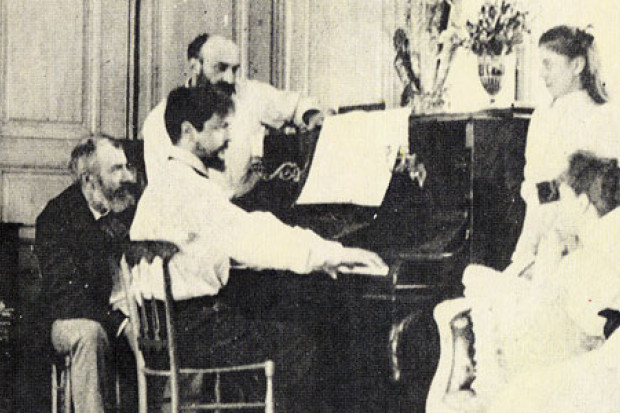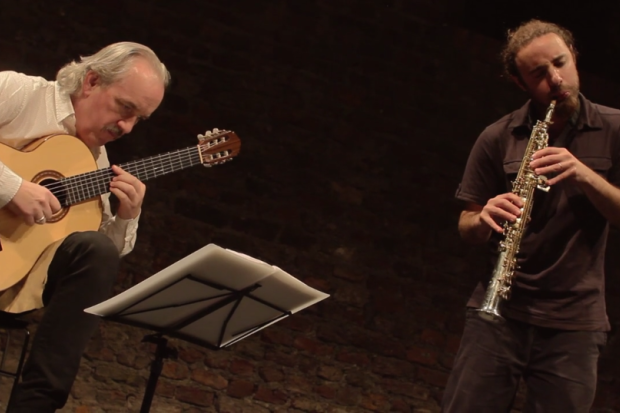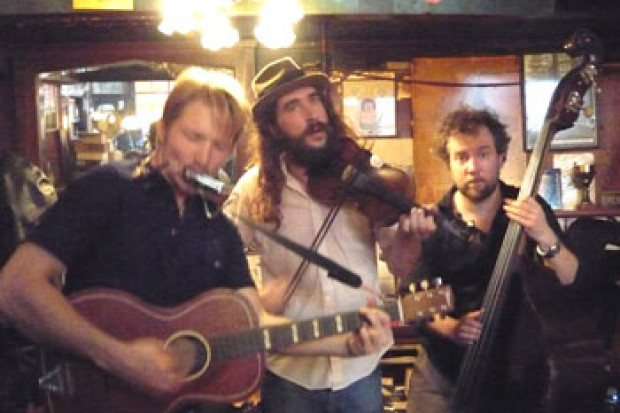Live Reviews: Composers' Choice – Gerald Barry
NCH, 13th April 2003
The Composers Ensemble
Stravinsky – La Marseillaise
Barry – ‘______’
Ives – Sonata No. 4 / ‘Children’s Day at Camp Meeting’
Barry – In the asylum
Lehár – Waltz from the Merry Widow
Barry – Bob
Stravinsky – Three pieces for solo clarinet
Barry – ‘Ø’
Strauss/Schoenberg – Kaiser-Walzer
Barry – Octet
This was the first Composers’ Choice concert of this year, but the series is entering its fourth year, and of all those concerts together this one will stand out as the most egotistical and audacious ever. Not just because Gerald Barry programmed five substantial works of his own, which must be a record in the series, but because the other composers in this programme seemed chosen simply to illuminate aspects of Barry’s work, and throw it all into the best possible light.
This was probably an unconscious process, as it was clear that he was basically letting us into his own private musical world, where it so happens that the gravity exerted by his own style is such that it bends the universe around it.
In the non-Barry pieces we heard elements that Barry has himself used more and better, i.e. borrowed tunes – melodies as ‘found objects’ embedded like fossils – in the surface of the Ives and the first Stravinsky piece; and the belief that a monody, if done right, is enough, as the two Stravinsky pieces and much of the Barry showed.
The sticky-sweet melodies from Lehár and Strauss served to combat any tiring from Barry’s savouriness. All this is not intended as an indictment, though one has to be extremely good to get away with it.
The Composers Ensemble performed everything with the fullest sympathy and enjoyment, making the most unbelievable style-swerves believable. The sheer eccentricity of opening with La Marseillaise (for solo violin), a bizarre work in the context even of Stravinsky’s varied output, and of having Lehár and Strauss exulting in the now forbidden fruit of diatonic melody with accompaniment, was carried off impressively by this ensemble.
Barry’s ‘_____’ and ‘Ø’, from 1979, are a world away from most new music, and deserve to be classics. Both are radical in the very best sense. In ‘_____’, motif, melody and harmony have been surgically removed from the musical body and there is only line: _____, colour, amplitude, and a vestige of rhythm reduced to Beckettian questions: stop or go, go on or go back. Although it is easy to lose interest for a while near the beginning, this is nonetheless an almost perfect piece of pure, original music. It has a powerful grip from the extremely quiet clarinet section to the incredibly effective final section, where the triple lock of monody, constant movement and the chromatic step finally, gradually, cracks to let in a tantalising scent of freedom.
Ø is for four players yet rules out any trace of harmony or counterpoint. When more than one is playing they play in unison or octaves. All that is allowed is a gargantuan phrase of synthetic melody with no rhythm. It is quite clear that this is modal monody, like Gregorian chant, but vulcanised by rejection of Darmstadt orthodoxy. That giant phrase is all there is, we get it five times (Barry being seemingly impervious to the dangers of rhetoric), three times unchanged except for instrumentation and register, then in two different but equally obsessive and simple variant rhythmic forms. It should be impossible, or at the very least illegal, to write this kind of music, and it nearly is.
In the asylum was the most recent piece here. It was the most complex of the five Barry works. Harmony, melody and counterpoint are released – but bound over to the peace. They are restricted by negative rules in what they may do. As a piece, this flirts with traditional concepts successfully, but if one is looking for evidence of Barry breaking yet more new ground, then it vexes. It certainly had a powerful start, but that was a(nother) monodic section – spare and ghostly. There were melodies as found objects here. The problem I had with this piece, though I probably need another hearing, was that the texture and tempo changes that are trademark Barry gestures seemed just too choppy and hence weaker here.
Bob (for ensemble) also starts with monody and minimal rhythmic choice. At first only one rhythmic value is available, then a break, tempo change, and conditions relax a little, though we are still in monody. Thus growth is portrayed non-organically, in disparate textures like a series of dead samples in formaldehyde. It proceeds through about twelve such breaks with texture and tempo changes, a lot of the drama coming from the tension of concentration required where so many play very fast and irregular material in unison/octaves. Here there are a number of cross-references as echoes of earlier textures are revisited. But it is once more the quality of the neo-modal argument at any moment that makes the music work; not its choice of form, which is there (just) for decoration.
Barry’s Octet also presents around ten disparate textures, with many revisitations, so it shares something with Bob. Less like Bob, there are fossilised tonal melodies, very Stravinskian wind textures, and even a Kevin Volans moment towards the end. As with the end of ‘_____’ there are melodies in parallel dyads and chords; also recalling Stravinsky’s techniques. But most of this is pure Barry, such as the huge piano clusters in jiggy rhythms that form the climax of the piece.
The lesser artist borrows and the great artist steals. Gerald Barry likes to leave the clues lying around too…
Published on 1 May 2003
John McLachlan is a composer and member of Aosdána. www.johnmclachlan.org














